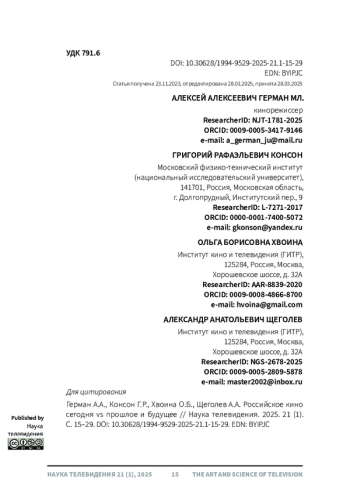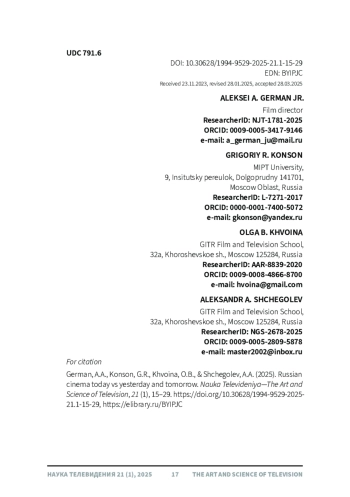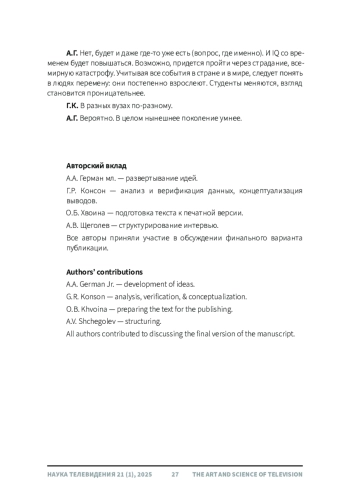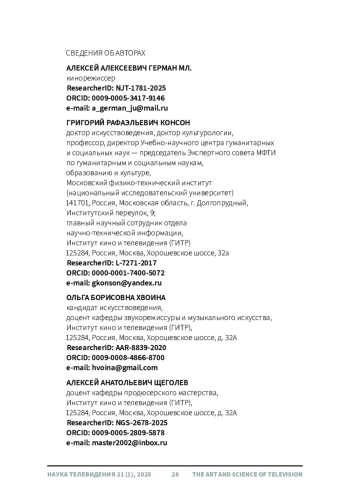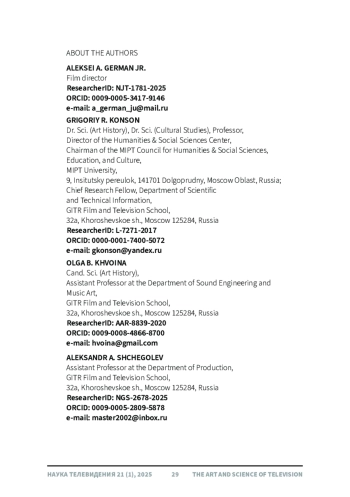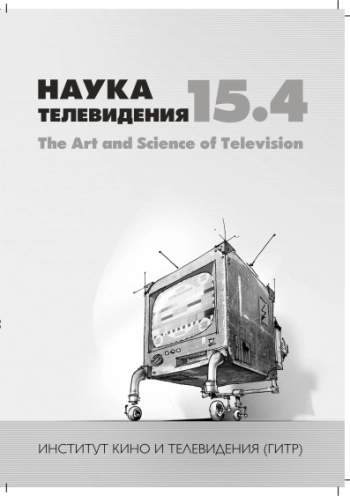Публикация интервью сотрудников ГИТРа с известным режиссером Алексеем Германом-младшим связана с выявлением критериев успеха в современном кинотворчестве. Эта проблема раскрывается через рассмотрение многих вопросов: отношение к новому, в том числе к неизбежной интенсификации технологизации; осмысление разных киножанров, прежде всего фантастики, как маркера новаторства на экране; искусственный интеллект в сравнении с творчеством живых художников; наследие кинематографического прошлого и место отечественного кино в мировом масштабе; финансирование киноиндустрии в России и США. Изучая художественную практику современной киноиндустрии в сравнении с более ранними этапами ее эволюции, авторы делают попытку сформировать прогностический взгляд на развитие кинематографа, прежде всего, отечественного.
This article draws on the ideas of Alan Kirby, who in the 2000s proclaimed the advent of the digimodernist era dominated by visual narratives, and Walter Ong’s concept of secondary orality. It argues that advances in media technology and the saturation of everyday life with visual content contribute to the mythologization of political processes. The study focuses on American lms and TV series employing pseudodocumentary techniques, which foster viewers’ illusions of authenticity and depoliticized perception of ctional events. The analysis of political reality mythologization in American cinema is grounded in Joseph Campbell’s monomyth framework and structuralist theory, revealing persistent mythologemes that shape representations of politics in mass culture. Through Chiara Bottici’s and Benoît Challand’s theory of political myth, cinema is examined as a tool for crafting myths that reinforce and legitimize American political ideology. Despite their genre and stylistic diversity, American political lms and series form a cohesive structure, perpetuating core mythologemes that uphold democratic values and ideals. Key elements of this monomyth include: the sanctity of institutions and federalism, as well as the glori cation of journalists, officials, and ordinary citizens who expose state secrets in the name of justice. The corruption of individual politicians serves as a backdrop, highlighting processes such as elections and bipartisan compromise while advancing the notion of media’s vital role in holding power to account. The article concludes that the proliferation of cinematic political imagery in the late 20th century is connected with the growth of media influence and the development of Internet culture, providing unprecedented access to political information to the public. Viewers, immersed in screen culture, began to perceive cinema as a way to “observe” politics, thus building a demand for mythological constructs that simplify complex political dynamics.
Предпросмотр статьи
Идентификаторы и классификаторы
- SCI
- Искусство
